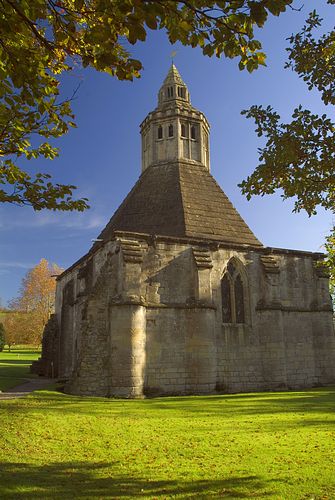
Myths and Legends of Great Britain
England, Scotland, and Wales are replete with ancient legends, myths so old their origins are lost in the mists of time. Legends of warrior kings, noble outlaws, and stirring deeds.
Subsequently, you will learn about some of these legends, and find out where to go to see some of the (presumed) sites where these mythical characters lived and died. And you can decide for yourself if, just maybe, there is truth behind the myths.
East Barnet - Haunted by its Past:
At first encounter, East Barnet, a leafy North London suburb, appears calm, comfortable, and conventional. But beneath the superficial lies the supernatural. For this is an area that seems to have attracted and retained more than its fair share of myths and legends over the thousand or so years of its recorded history.
The ghost of a medieval knight who has appeared in full armour on horse-back galloping across East Barnet’s Oak Hill Park, and an ancient oak tree that burst into flames on a clear summer's day early in the 20th century are just two of dozens of legends about the area that persist to the present day.
In the time of William the First, the Norman king who conquered England following the battle of Hastings in 1066, East Barnet was a heavily wooded area that included much of what is now known as Chipping or High Barnet - where the Battle of Barnet, a deciding factor in the War of the Roses (1455-1485) took place - Monken Hadley, Hadley Woods, Friern Barnet and even as far out as South Mimms, now on the M25 motorway box around London. Much of this land belonged to the Abbot of St Albans, but in return for resisting William, the southern Among the knights who fought alongside William at Hastings was a Norman landowner Geoffrey de Mandeville. He was rewarded with the grant of large stretches of land in Essex, Middlesex, and adjoining counties. By the time his grandson, also named Geoffrey, inherited the title of Earl of Essex, much of the land that went with it had been lost through the mistakes of his father, William. But the young Sir Geoffrey was not deterred and set out to recover the family’s fortunes by whatever means were available to him.
His harsh methods and political manoeuvering brought results and by 1141 Sir Geoffrey had become the premier baron of England. But his ruthlessness also created powerful enemies and in 1143 he was excommunicated for his ill-treatment of religious groups. When, accused of treason by the King, Stephen, he died a bloody death the following year, a Christian burial was denied him. It is this lack of a Christian burial which is said to cause his ghost to haunt what remains of the woods at East Barnet and Hadley.
The legend of the ghost of Sir Geoffrey de Mandeville has been sufficiently substantiated to be recorded on the official Pymmes Brook Trail information board alongside the brook, which flows through Oak Hill Park and is believed by some to be a conduit for the reported psychic forces and manifestations in this area.
Seventy years ago, an eminent Justice of the Peace described Church Hill Road, which edges Oak Hill Park, as the "The Ghosts' Promenade", such were the volume of spectral sightings associated with it. And as the local newspaper, the Barnet Press, put it, "Headless hounds, decapitated bodies, spectres in the trees - the list of ghostly experiences at Oak Hill Park in East Barnet see ms to go on and on."
ms to go on and on."

In the early 1930s an ancient oak tree within the Park and alongside Church Hill Road burst into flames on a clear summer day. When no apparent cause could be found for the conflagration, the mysterious phenomena of spontaneous combustion was suggested. But speculation developed rapidly and has never been resolved, particularly when it was noted that this tree was not just one of many. It had a special distinction.
This was the actual oak tree under which the famous 18th century religious visionary and prophetess Joanna Southcott, used to sit during her many visits to friends in East Barnet. It was here that she was said to have received the inspiration that she was the woman described in Chapter 12 of The Bible’s Book of Revelation, leading to her many predictions and secrets supposedly contained after her death in the infamous Joanna Southcott’s box about which controversy has never totally subsided.
King Arthur:
The time...early 5th century. As the Roman hold on Britain got progressively weaker and the Roman Empire tottered on into a creaky old age, England was subject to a fresh influx of settlers from the area of modern Germany. These settlers, tribes of Angles, Saxons, Jutes, and Frisians, may have first come to England as mercenaries in the Roman army. In the wake of the Roman withdrawal British leaders, perhaps under a powerful overking, Vortigern, hired these mercenaries for protection. Mercenaries can be helpful as long as they are paid, but when the money ran out the Germ ans rose in rebellion.
ans rose in rebellion.
At first the British inhabitants fell back to the heights of the old Iron Age hill forts. There is evidence that many forts were reoccupied in the late 5th century. Gradually, however, even this struggle proved in vain, and the Germanic invaders settled throughout much of south, east, and northeast England.

The Roman warrior. It is during this push for settlement that the next and greatest British hero was born, the legendary King Arthur. Was King Arthur real? Not in the sense of the wonderful medieval romances popularized by Thomas Malory. There were no knights in shining armour searching for the Holy Grail in Arthur's company. In all likelihood there was no Round Table or Sword in the Stone. What there was instead was a very brave warrior, who may not even have been named Arthur, leading the remnants of romanised British resistance against a steady onslaught of foreign pagan invaders.
Conflicting claims. In researching this material I found definitively that Arthur was Welsh, Celtic, or Breton. That he fought the Saxons in the north, in the south, or in Wales, around the year 450, or 500, or 525. That he was and wasn't a king, who was or wasn't named Arthur. That he was a figure of imagination and a real person.
The real Arthur (maybe). It seems that there was a war leader, whose name we do not know, who defeated the Saxons, checking their advance temporarily. In later years people remembered this leader with longing; "Oh, if we only had ... to lead us now". Eventually the name Arthur adhered to this folk memory, and his list of accomplishments grew. Arthur is in many ways greater because we do not know the truth; it can't get in the way of peoples' need to create a saviour who is waiting to come to their aid when times get tough.

The real Arthur may have been a man named Ambrosius Aurelianus, or perhaps his war leader, who defeated the Saxons in a major battle we know as Mount Badon, (which may possibly be South Cadbury, in Somerset) halting their advance for as long as forty years. In the end, however, the superior might and numbers of the Saxons and their allies were too much for the islanders, and Arthur's efforts became little more than a historical footnote. A terrifically romantic and exciting footnote though, for Arthur and his deeds were woven like a silk thread into the fabric of myth and legend in which Celtic storytellers delight.
There are so many myths associated with Glastonbury that it is difficult to know where to begin to talk about them. There are two main streams of legend that surround Glastonbury, though they twine around each other to some degree. The two streams revolve around the romantic figures of Joseph of Arimathea and King Arthur. Let's take them one at a time.
Joseph of Arimathea
Joseph was the Biblical figure who took Jesus' body after the crucifixion. According to some legends he was actually Jesus' uncle, and had visited Britain years before with Jesus in the pursuit of his interests in the tin trade. It appears that there actually was a strong Jewish presence in the west of England at that time, and many of the tin miners may have been Jewish settlers.
At any rate, when Jesus died, Joseph thought it prudent to flee Palestine, and after many travails he came to Britain with a company of followers. He brought with him the Holy Grail, the cup used by Jesus at the Last Supper. Some versions of the legend have it that the Grail contained two drops of blood captured from Jesus' side when he was wounded on the cross.
When Joseph came to Britain he was granted land at Glastonbury by the local king. When he arrived at Glastonbury, Joseph stuck his thorn staff in the earth, whereupon it rooted and burst into bloom. A cutting from that first tree was planted in the grounds of the later Glastonbury Abbey, where it continued to bloom every year therafter at Christmas time. There is still a thorn tree in the Abbey grounds, of a variety native to the Holy Lands, and it does indeed bloom around Christmas time.
Joseph was said to have established the first church in England at Glastonbury, and archaeological records show that there may well have been an extremely early Christian church here. What happened to the Holy Grail is another matter. Some legends have it that Joseph buried the Grail at the foot of Glastonbury Tor, whereupon a spring of blood gushed forth from the ground.
There is a well at the base of the Tor, Chalice Well, and the water that issues from it does indeed have a reddish tinge to it, from the iron content of the water.
Other legends have it that the Holy Grail was interred with Joseph when he died, in a secret grave. The search for the mysterious Grail emerges again and again in the tales of Glastonbury.
Further legends tell that the church founded by Joseph continued for many years. Eventually it became a monastery, and one of the first abbots was the future St Patrick, who was born in the west country.
The legend of El Dorado:
The legend of El Dorado was about a fabulously wealthy city of gold and the king who ruled over it. The story sprang up shortly after the first Spanish explorers landed in Central and South America.
Local people told tales of a rich king who plastered his body with gold dust and then dived into a sacred lake to wash it off. Afterward, he would toss gold into the lake as an offering to the gods. The Spanish called the king El Dorado—The Gilded One—because his body was gilded, or covered, in gold. As the tale spread, the city he ruled came to be called El Dorado. Eventually, the meaning of the name changed to include any mythical region that contained great riches.
An early version of the El Dorado legend placed the city near Lake Guatavita not too far from modern Bogotá, Colombia. The story was based on the Muisca people who performed a ceremony similar to that in the legend.




No hay comentarios:
Publicar un comentario